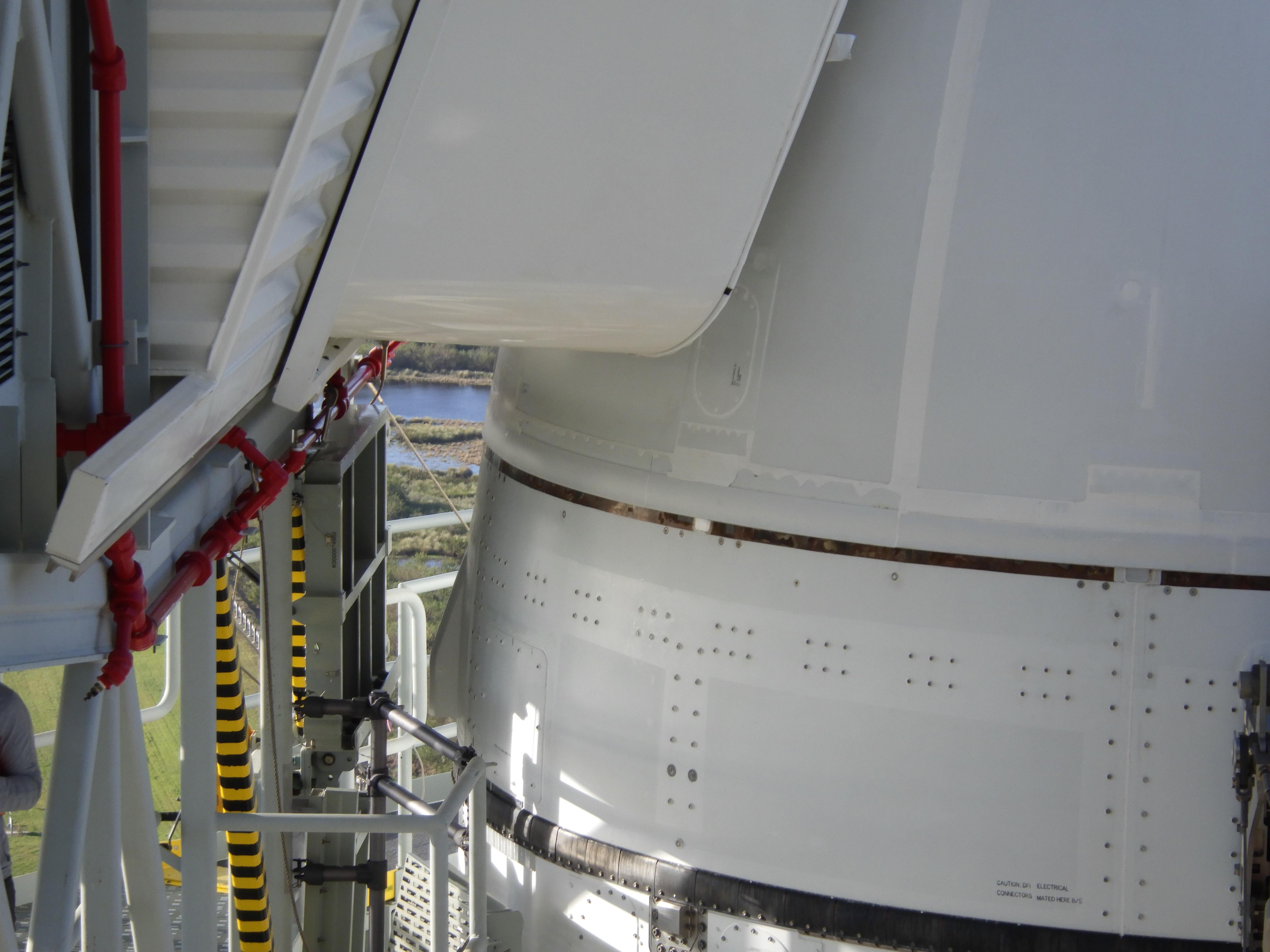
Caulk on a seam between the Orion launch abort system and crew module adapter detached during Hurricane Nicole.
CAPE CANAVERAL—Managers overseeing NASA’s Artemis I flight test say the risk posed by storm-damaged caulk on the Orion capsule is not an impediment for flight, clearing the way for a launch attempt at 1:04 a.m. EST on Nov. 16.
Pieces of a 10-ft. long section of the silicon caulk, known as RTV, delaminated due to high winds from Hurricane Nicole, which pummeled Central Florida’s east coast with 75 mph winds on Nov. 10. “[The RTV] tore off in little strips as the wind grabbed it and created a bit of lift,” Artemis I Mission Manager Mike Sarafin told reporters during a conference call Nov. 14.
NASA’s Space Launch System (SLS) rocket and Orion capsule had been rolled out to Kennedy Space Center’s Launch Complex 39B six days earlier, when the storm was poorly organized and not expected to produce winds beyond 46 mph at NASA’s seaside spaceport.
Countdown clocks began ticking at 2:04 a.m. EST on Nov. 14, but the Mission Management Team reconvened later in the day to assess the risk posed by the RTV damage, as well as to review attempts to troubleshoot a balky electrical connector located on the ground-side plate of the liquid hydrogen tail service mast umbilical.
“We’re seeing some funnies on that particular umbilical, but we have redundant data that comes across that interface from the rocket and the spacecraft to the ground side,” Sarafin said.
The delaminated caulk is located where the Orion launch abort system’s aerodynamic shell joins the crew module adaptor. It cannot be repaired at the launch pad.
Managers considered the chance that additional RTV could tear off during ascent, creating debris that could impact other flight hardware. But ultimately the chance of mission-critical damage was determined to be extremely low, Sarafin said.
“It’s not going to come off as one really long piece. It’s going to break into smaller pieces,” Sarafin said. “It also has a very low lift coefficient, when you look at it aerodynamically, because of how pliable it is.”
If RTV debris should impact the vehicle, the most likely place would be on the very robust launch vehicle stage adapter, a 10,000-lb. conical structure that sits between the top of the SLS core stage and the base of the second stage, known as the interim cryogenic propulsion stage.
The overall risk of losing the vehicle remains 1-in-125, Sarafin said. “We’re maybe a couple of decimal points past that 1-in-125. There’s probably a marginal increase in risk due to the potential for the RTV to be liberated and follow a very specific trajectory and hit a very specific component and cause critical damage, which would essentially result in a loss of functionality.”
“We see that is a low likelihood,” he added.
The two-hour launch window on Nov. 16 closes at 3:04 a.m. The mission marks the first flight of the SLS, which has been in development for more than a decade. It is expected to send an uncrewed Orion capsule on a shakedown cruise around the Moon in preparation for a crewed flight test in 2024.
The Artemis program is a NASA-led initiative to create and sustain human presence in cislunar space. Three previous launch attempts in August and September were scrubbed, primarily to address hydrogen leaks.

Comments